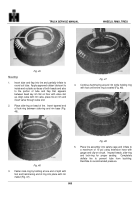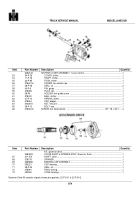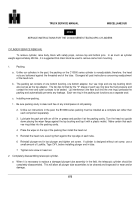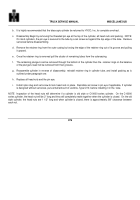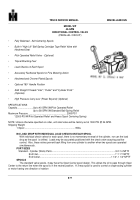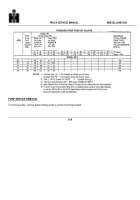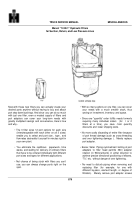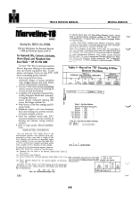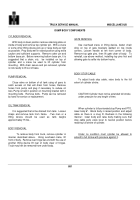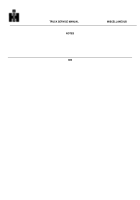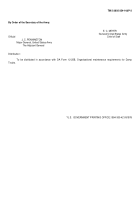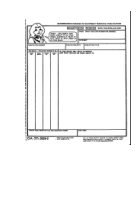TM-5-3805-254-14-P-2 - Page 884 of 894
TRUCK SERVICE MANUAL
MISCELLANEOUS
HYCO
SERVICE INSTRUCTIONS FOR THE C10000 SERIES TELESCOPIC CYLINDERS
CYLINDER SERVICE REMOVAL
To remove cylinder, raise body, block with safety props, remove top and bottom pins.
In as much as cylinder
weighs approximately 450 lbs., it is suggested that chain block be used to remove same from mounting.
1.
Packing.
a.
Unlike our cylinders in the past, the packing on the C10000 series cylinder is nonadjustable; therefore, the head
nuts are bottomed against the threaded end of the tube.
Disregard all past instructions concerning readjustment
of the head nuts.
b.
The packing set consists of one bottom bushing, one bottom adapter, four vee rings and one top bushing which
also serves as the top adapter.
The two lips formed by the "V" shape of each vee ring face the fluid pressure and
contact the inner and outer surfaces to be sealed.
Lip interference (the flare built into the vee rings) preloads the
packing and automatically prevents any leakage.
Each vee ring in the packing set functions as a separate seal.
c.
Installing new packing.
1.
Be sure packing cavity is clean and free of any small pieces of old packing.
2.
Unlike our instructions in the past, the B10038 series packing must be installed as a complete set rather than
each component separately.
3.
Lubricate the pack set with an oil film or grease and position it at the packing cavity. Turn the head nut upside
down placing the wiper flange against the top bushing and tap it with a plastic mallet.
Make certain that each
vee ring slides into the packing cavity.
4
Place the wiper on the top of the packing then install the head nut.
5
Reinstall the head nuts, securing them against the top edge of each tube.
6
Reinstall plunger end in last plunger and tighten set screw.
If cylinder is designed without set screw, use a
small amount of Locktite, Type CVV, before installing plunger end in tube.
7
Tighten lock screw in head nut.
2
Completely disassembling telescopic cylinder.
a
When it is necessary to replace a damaged plunger tube assembly in the field, the telescopic cylinder should be
completely disassembled.
This will allow all plunger tube assemblies to be cleaned and inspected for wear and/or
damage.
875
Back to Top

